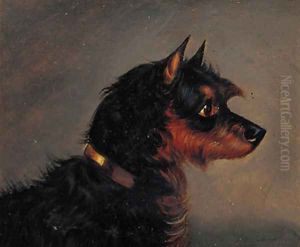Edwin Loder Of Bath Paintings
Edwin Loder of Bath, born in 1804, was an English landscape and portrait painter associated with the city of Bath in Somerset, England. His oeuvre is characterized by its detailed depiction of both urban and rural landscapes, and he was well regarded in his time for his artistic skills. Loder was largely influenced by the picturesque and Romantic movements that were prevalent during the early 19th century. These movements emphasized the beauty of nature and often sought to capture the sublime in the everyday.
Loder's education and early career are not well-documented, but it is known that he was active in Bath, a city famous for its Georgian architecture and its association with many artists and literary figures. His paintings often reflect the serene and harmonious qualities of Bath's urban landscapes, as well as the surrounding countryside. Unlike many of his contemporaries who traveled to Europe to study the masters or to capture exotic landscapes, Loder primarily focused on British scenes, which resonated with the Victorian public's growing interest in domestic tourism and the countryside.
During his lifetime, Loder exhibited at various prestigious institutions, including the Royal Academy and the British Institution. This exposure would have established his reputation as a skilled painter. However, despite his local success and recognition, Loder did not achieve the same level of fame as some of his contemporaries. This may be due to the regional nature of his work, which may not have garnered as wide an audience.
Edwin Loder of Bath passed away in 1885. While he may not be a household name today, his paintings remain valuable for their historical depiction of 19th-century England and contribute to the visual understanding of the period. His works are held in collections and museums, offering insight into the aesthetics and sensibilities of the Victorian era. Loder's legacy continues to be appreciated by art historians and collectors who have an interest in the Romantic and picturesque traditions within British art.
